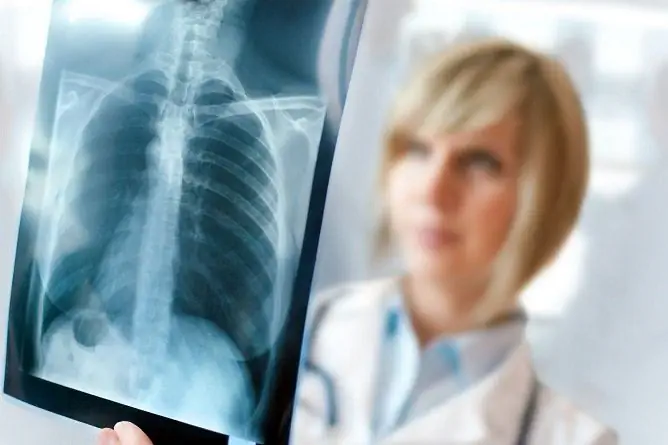- Author Rachel Wainwright [email protected].
- Public 2023-12-15 07:39.
- Last modified 2025-11-02 20:14.
Community-acquired pneumonia: what is it, causes, symptoms, treatment
The content of the article:
- Etiology of the development of the disease
-
Symptoms of pneumonia
Symptoms of Acute Community-Acquired Pneumonia
- Diagnosis of pathology
-
Treatment of community-acquired pneumonia
In what cases hospitalization is indicated
- Possible complications
- Prevention
- Video
Community-acquired pneumonia is one of the most common diseases and in the structure of mortality in developed countries takes 4-5 place. Mortality in pathology is 2-5%, among elderly and senile people it increases to 15-20%. Antibacterial chemotherapy forms the basis of effective treatment. The decisive factor in choosing a drug should be the correct judgment about the nature of the disease.
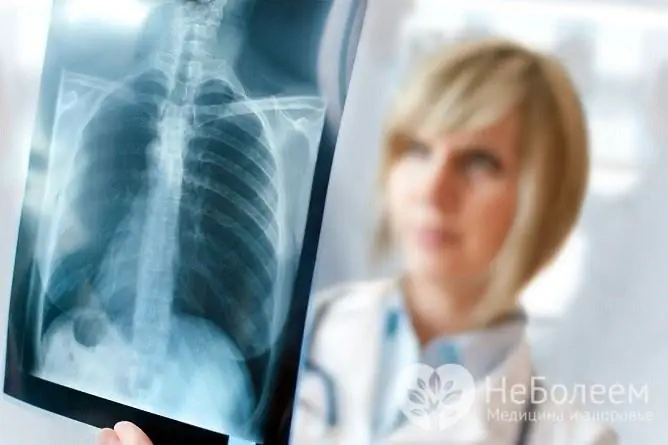
The choice of treatment method is determined by the doctor based on the clinical picture.
Pneumonia is a group of diseases of the lower respiratory tract caused by infection. In this case, the predominant damage to the alveoli and interstitial tissue of the lung is noted.
The following, purely pragmatic differentiation of pneumonia is ubiquitous:
- community-acquired: develops outside the walls of the hospital;
- nosocomial, or hospital: occurs against the background of treatment of other diseases in a medical institution (hospital).
This is a conditional division of pneumonia, however, it is justified, since their etiological agents differ. After collecting the anamnesis, the doctor can make a judgment about the place of development of pneumonia, thanks to which it is possible to more reasonably approach the choice of an antibacterial agent.
Etiology of the development of the disease
The causative agents of community-acquired pneumonia are usually bacteria: pneumococci, streptococci, haemophilus influenzae. In recent years, the epidemiological significance of agents such as chlamydia, mycoplasma, legionella, and pneumocysts has increased. In young patients, pneumonia is more often caused by monoinfection, and in persons over 60 years old - by associations of pathogens, most of which are represented by a combination of gram-positive and gram-negative flora.
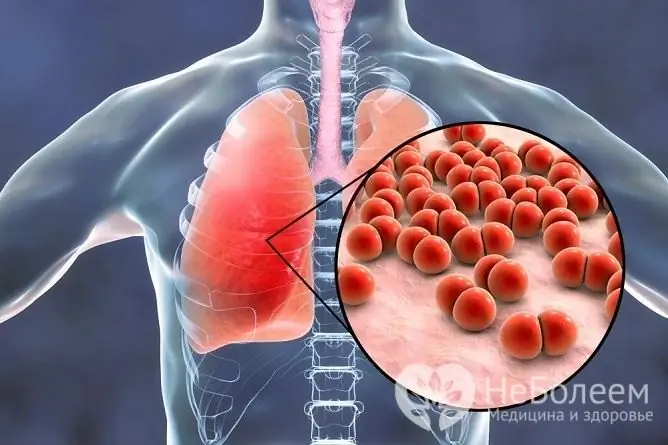
The causative agent of the disease is most often bacteria
While in gerontological institutions or some time after discharge from the hospital, the likelihood of developing pneumonia caused by gram-negative bacilli and staphylococci increases.
Symptoms of pneumonia
The main symptoms of pneumonia are usually:
- an increase in body temperature to febrile and subfebrile numbers (above 37.1 ° C);
- cough (more often with sputum production).
Less commonly, pleural pain, chills, shortness of breath are noted.
With lobar pneumonia, in particular with lower lobe pneumonia, signs of consolidation of lung tissue are revealed - bronchial breathing, shortening of percussion sound, increased vocal tremor. Auscultation most often reveals local small bubbling rales or the characteristic phenomenon of crepitus. In elderly and senile patients, the classic manifestations of pneumonia may be absent. Other signs of inflammation are possible: shortness of breath, hypothermia, fever, confusion (alone or a combination of these symptoms).
Right-sided pneumonia develops more often than damage to the left lung. This is due to the peculiarities of the anatomical structure of the respiratory tract.
When examining patients, dangerous signs should be carefully recorded: shortness of breath, hypotension, oliguria, severe bradycardia / tachycardia, confusion. The presence of septic foci can significantly affect the diagnosis and nature of therapy: pleural empyema, peritonitis, endocarditis, arthritis, brain abscess, meningitis, pericarditis.
Extrapulmonary manifestations help to understand the nature of the disease. So, polymorphic erythema and bullous otitis media are characteristic of mycoplasmosis, erythema nodosum is often observed in tuberculosis, retinitis is characteristic of toxoplasmosis and cytomegalovirus infection, skin rash - for chickenpox and measles.
Symptoms of Acute Community-Acquired Pneumonia
For acute pneumonia, the following symptoms are characteristic:
- bilateral, abscessing or multilobe pneumonia;
- rapid progression of the inflammatory process: within 48 hours of observation, the infiltration zone can increase by 50% or more;
- severe respiratory and vascular insufficiency (the use of pressor amines may be required);
- leukopenia;
- acute renal failure or oliguria.
Often, against the background of a severe course of pathology, such vital manifestations as multiple organ failure, infectious toxic shock, disseminated intravascular coagulation syndrome, and distress syndrome are diagnosed.
Diagnosis of pathology
In order to identify the pathogen, a bacteriological examination of sputum is traditionally carried out. The most convincing are sputum culture data obtained prior to initiation of therapy.
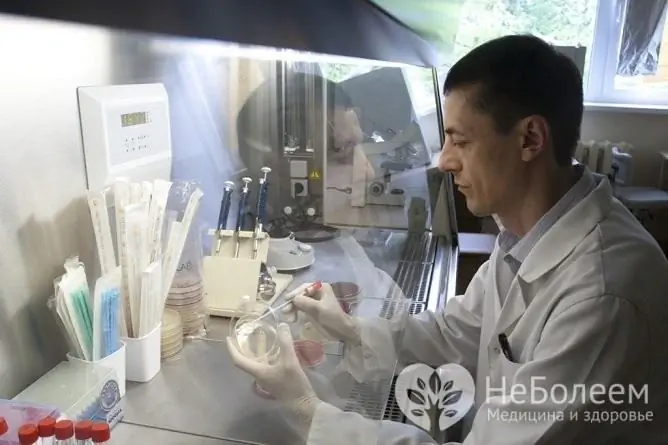
In order to determine the causative agent of pneumonia, a bacteriological examination of sputum is prescribed
It takes a certain amount of time to conduct a bacteriological test, and its results can be obtained after 3-4 days. An indicative method is microscopy of a sputum smear, stained according to Gram. Its main advantages are its general availability and short duration. Thanks to this research, you can determine the choice of the optimal antibiotic.
Determination of the sensitivity of the isolated microflora to an antibacterial agent is especially important in cases where the initial therapy was ineffective. It should be borne in mind that the results of bacteriological research may be distorted due to previous antibiotic therapy.
Despite the widespread use of laboratory diagnostic methods, it is often not possible to identify the causative agent of pneumonia, and in patients with a mild degree of the disease, this indicator is especially high (up to 90%). This is partly due to the known difficulties in the timely receipt of material from the focus of inflammation. Extreme difficulty in the etiological diagnosis of pathology is caused by:
- absence of sputum (in 10-30% of patients in the early stages of the disease) and the difficulty of obtaining it in children, especially at the age of one year;
- the inability to obtain bronchial secretions by invasive methods due to the severity of the patient's condition, insufficient qualifications of the medical staff, or for other reasons;
- combining bronchial contents with microflora of the upper respiratory tract and oral cavity;
- high level of carriage of S. pneumoniae, H. influenzae and other conditional pathogens.
For the etiological decoding of chlamydial, legionella, mycoplasma, viral pneumonia, so-called non-cultural methods are often used. Currently, it is possible to use kits for the determination of antigens of pneumococcus, Legionella, Haemophilus influenzae in urine. Unfortunately, these rapid diagnostic methods are quite expensive, and not everyone can afford them.
An x-ray is done to make a diagnosis. Revealed infiltrative changes can be lobe and multilobe. This is typical for the bacterial etiology of the disease (for pneumococcal, legionella pneumonia, as well as for pathologies caused by anaerobes and fungi).
In the presence of diffuse bilateral infiltrations, pathogens such as influenza virus, staphylococcus, pneumococcus, legionella are usually detected. Multi-focal and focal infiltration can be homogeneous (legionella, pneumococcus) or inhomogeneous (viruses, staphylococcus, mycoplasma). The combination of interstitial and infiltrative changes is typical for the disease of viral, pneumocystis and mycoplasma nature.
Treatment of community-acquired pneumonia
In almost all cases, the physician empirically chooses a first-line antibiotic for the treatment of pneumonia, based on knowledge of the allergic history, clinical and epidemiological situation, and the spectrum of antibiotic exposure.
Possible drugs for therapy:
- penicillins and aminopenicillins (Ampicillin, Amoxicillin): for pneumonia caused by pneumococci;
- macrolides (Erythromycin, Clarithromycin, Midecamycin, Roxithromycin, Spiramycin) and azalides (Azithromycin): for pneumonia caused by legionella, mycoplasma, chlamydia.
Macrolides are also an alternative treatment for streptococcal (pneumococcal) infection if you are allergic to β-lactam drugs. Instead of macrolides, tetracyclines (Doxycycline) can be prescribed, however, it is necessary to take into account the frequent resistance of gram-positive flora to this group of drugs.
In cases where it is assumed that mixed flora led to the development of community-acquired pneumonia, reinforced aminopenicillins (Amoxicillin / Clavulanate, Ampicillin / Sulbactam) or III generation cephalosporins (Cefotaxime, Ceftriaxone) are prescribed.
In the treatment of pathology caused by gram-negative microorganisms, aminoglycosides (Gentamicin, Amikacin) and fluoroquinolones are usually used. In severe cases, a combination of aminoglycosides and fluoroquinolones may be prescribed.
Of particular difficulty is the treatment of pneumonia caused by Pseudomonas aeruginosa and other multidrug-resistant microorganisms. In such cases, the use of antipseudomonal cephalosporins (Ceftazidime), fourth-generation cephalosporins (Cefepime), carbapenems (Meropenem), or a combination of the listed antibacterial agents with aminoglycosides or fluoroquinolones is indicated.
In relation to the anaerobic flora, which often leads to aspiration pneumonia, carbapenems, Clindamycin, Metronidazole, Cefepime are active. For pneumocystis disease, it is best to use co-trimoxazole (Biseptol).
In what cases hospitalization is indicated
In severe pathology, hospitalization is indicated for all patients, in particular for infants and the elderly. Antibiotic therapy should be administered exclusively intravenously. For pneumonia with a septic course, which is characterized by high mortality, it is extremely important to start early chemotherapy, in this case, the use of antibacterial agents should be started within one hour of the diagnosis.
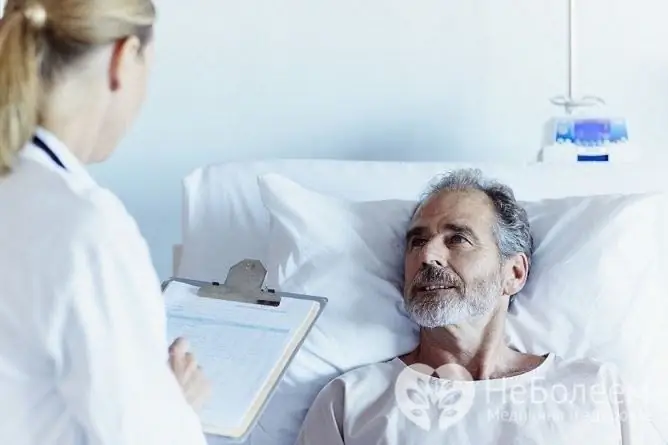
With a complicated course of the disease, hospitalization is indicated
To stabilize hemodynamics, it is necessary to carry out infusion therapy, the administration of pressor amines and (according to vital indications) high doses of corticosteroids is indicated.
Blood pressure with unstable hemodynamics, infectious-toxic shock should be increased as soon as possible. This is due to the fact that multiple organ disorders and mortality are directly related to the duration of hypotension.
In the case of severe pneumonia, the use of antibiotics of the widest spectrum of action, such as carbapenems or cephalosporins of the III-IV generation in combination with macrolides, is quite justified. Later, after improving the patient's condition, clarifying the clinical situation or the causative agent of the pathology, the amount of antibacterial chemotherapy is reduced to the required minimum.
Possible complications
In adults and children, the most common complications of community-acquired pneumonia are:
- pleurisy;
- acute renal failure;
- respiratory failure;
- abscess formation;
- acute vascular insufficiency;
- myocarditis.
Prevention
It must be remembered that pneumonia is a dangerous infectious disease, the causative agent of which can be spread by airborne droplets or by contact.

Vaccination is an effective method of preventing pneumonia
Given that pneumococcus is the cause of up to 76% of pneumonia, vaccination is an effective protection against this common disease. For this purpose, the use of polysaccharide multivalent vaccines containing antigens of 23 serotypes, which cause most (up to 90%) of pneumococcal diseases, is shown.
Vaccination is carried out once, the subsequent revaccination is necessary for patients belonging to the high-risk group - people over 65 years of age, as well as patients with reduced immunity.
Therapy for community-acquired pneumonia is usually done at home. In order for the body to effectively cope with the causative agent of the disease, it is necessary to strictly observe medical prescriptions.
Video
We offer for viewing a video on the topic of the article.

Anna Kozlova Medical journalist About the author
Education: Rostov State Medical University, specialty "General Medicine".
Found a mistake in the text? Select it and press Ctrl + Enter.

